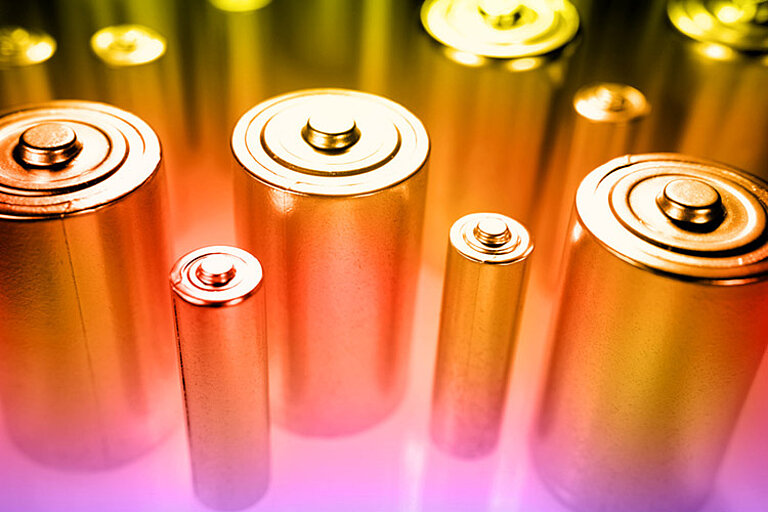Publications
![[Translate to Englisch:] [Translate to Englisch:]](/fileadmin/user_upload/Presse_und_Medien/mediathek/YouTube-Vorschaubild/NOA-Namur-Open-Architecture-Connectivity.jpg)
Batteries are indispensable in the industry as well as in private households. But what is a battery? Here is a brief outline of one of the most important energy suppliers.

The term "battery" is used both as a generic term for energy storage and as a term for a non-rechargeable energy storage (primary battery). Whether a non-rechargeable primary battery (e.g. long-term use in watches) or an accumulator (e.g. in smartphones) is used in a device depends on the use.
In practice, a distinction is made between two different types of energy storage: primary and secondary batteries. Primary batteries can only be discharged once and cannot be recharged afterwards. Secondary batteries, commonly known as accumulators, are rechargeable.
Regarding application, it is distinguished between device batteries, starter batteries and industrial batteries. While portable batteries are mainly used in wristwatches, smartphones, laptops or torches, starter batteries are mainly used in cars. Industrial batteries are installed in stationary applications such as uninterruptible power supplies, mobile phone base stations or forklifts.
A battery is an electrochemical energy storage. It usually consists of a combination of electrochemical cells, the so-called galvanic cells. These cells contain two electrodes separated by an ion-conducting, liquid or solid electrolyte. These consist of different materials (e.g. lithium, alkali manganese, lead). Depending on the chemical system used, the battery systems have different voltage levels and energy densities. The material used for the electrodes determines how high the nominal voltage is. The energy that can be stored depends on the nature and amount of material used in the battery.
During discharge, the energy stored in chemical form is converted into electrical energy by an electrochemical reaction and electricity flows.
A cell is the basic functional unit of a battery, which consists of an compilation of electrodes with active materials, electrolyte, containers, connections and usually separators. The capacity of a cell results from the size or weight, the internal structure and the material combination of the electrodes.
A battery management system is an electronic circuit that enables the battery to function properly and monitors its characteristics, such as the voltages of the individual cells of the battery, the voltage of the cells under load and the internal resistance. Safety-relevant events such as overcharging, deep discharge, high temperatures, short circuits, etc. are also detected and prevented during operation.